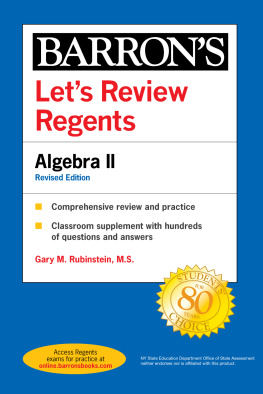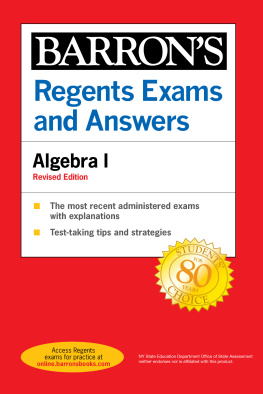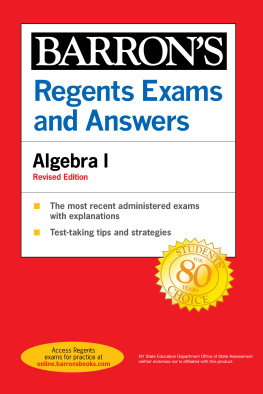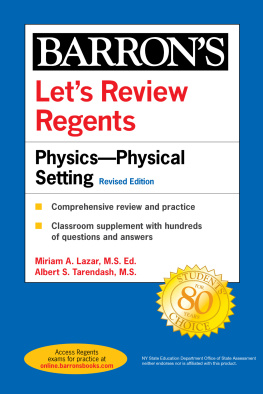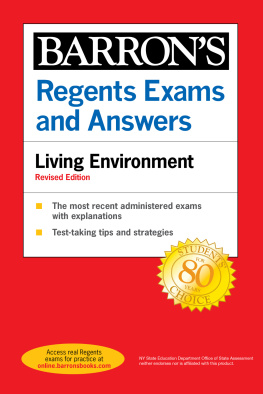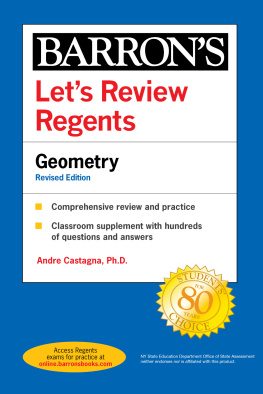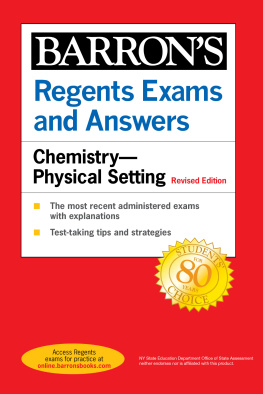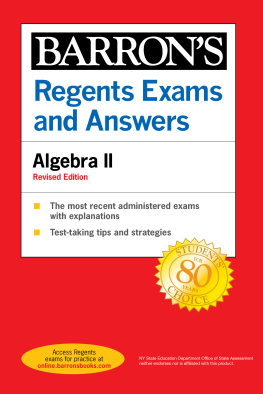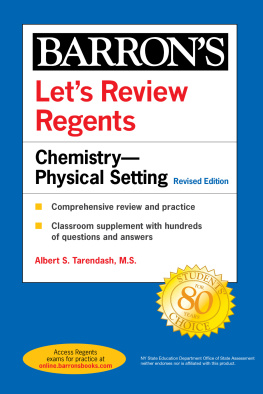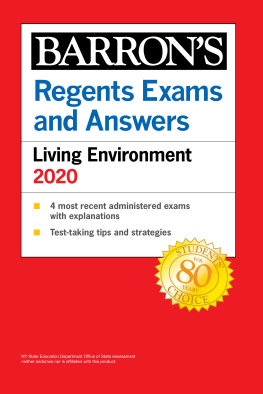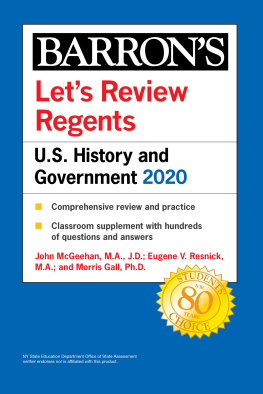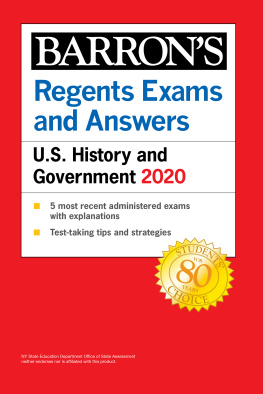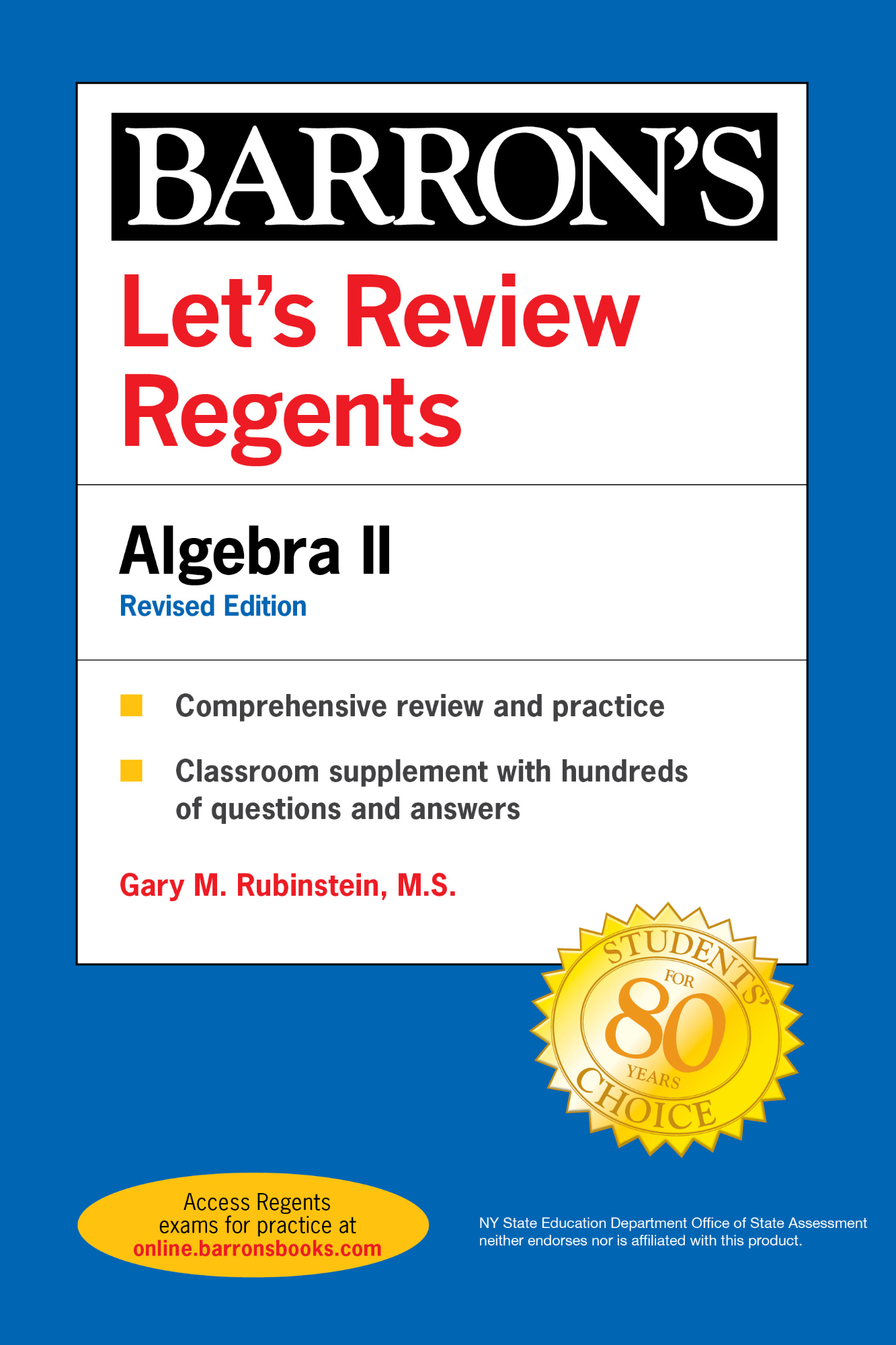Copyright 2021, 2020, 2018, 2017 by Kaplan, Inc., d/b/a Barrons Educational Series
All rights reserved under International and Pan-American Copyright Conventions. By payment of the required fees, you have been granted the non-exclusive, non-transferable right to access and read the text of this eBook on screen. No part of this text may be reproduced, transmitted, downloaded, decompiled, reverse engineered, or stored in or introduced into any information storage and retrieval system, in any form or by any means, whether electronic or mechanical, now known or hereinafter invented, without the express written permission of the publisher.
Published by Kaplan, Inc., d/b/a Barrons Educational Series
750 Third Avenue
New York, NY 10017
www.barronseduc.com
ISBN: 978-1-5062-7185-9
About the Author
Gary Rubinstein has been teaching math for more than 25 years. He is a three-time recipient of the Math for America Master Teacher Fellowship. Gary lives with his wife Erica and his two children, Sarah and Sam. He has a YouTube channel at nymathteacher where students can find extra test tips and strategies for learning Algebra II.
Dedication
To Erica, Sarah, and Sam
Preface
In 2009, New York State adopted the Common Core Standards in order to qualify for President Obamas Race To The Top initiative. The Common Core math curriculum is more difficult than the previous math curriculum. The new state tests, including the Common Core Algebra II Regents, are more difficult as well.
Certain topics that had been in the Algebra II/Trigonometry curriculum for decades have been removed for not being rigorous enough. Other topics have been added with the goal of making 21st-century American students more career and college ready than their predecessors.
The main topics that have been cut from the curriculum are permutations, combinations, Bernoulli trials, binomial expansion, and the majority of the trigonometric identities like the sine sum, cosine sum, sine difference, cosine difference, and the different double-angle and halfangle formulas. Other topics have been moved into earlier grades like the law of sines and the law of cosines. More than half of the trigonometry that had once been part of Algebra II is no longer part of the course.
Other topics have been added to fill the gaps left by those topics now considered obsolete. Primarily, these new topics are often taught in AP Statistics as part of inferential statistics.
Aside from the change in topics, there is a change in the style of questions. Students now need to think more deeply about the topics because questions are intentionally phrased in a less straightforward way than they had been in the past.
Conquering the Algebra II test, something that was never an easy feat beforehand, has gotten much more difficult and will require more test preparation than before. Getting this book is a great first step toward that goal. In addition to reviewing all of the topics that can appear on this test, this book includes nearly 1,000 practice questions of various difficulty levels. This book can serve as a review or even as a way to learn the material for the first time. Teachers can also use this book to guide their pacing. They can focus on the types of questions that are most likely to appear on the test and spend less time on complicated aspects of the Common Core curriculum that are unlikely to be on the test.
The Common Core is part of a grand plan that is intended to propel our country to the top of the international rankings in math and reading. Good luck. We are all counting on you!
Gary Rubinstein
Math Teacher
2016
Chapter One
Polynomial Expressions and Equations
1.1 POLYNOMIAL ARITHMETIC
Key Ideas
A polynomial is an expression like x2 5x + 6 that combines numbers and variables raised to different powers. Just as two numbers can be added, subtracted, multiplied, or divided, polynomials can be too.
Multiplying a Polynomial by a Constant
To multiply a polynomial by a constant, multiply the constant by each of the coefficients of the polynomial. This is sometimes called distributing the constant through the polynomial.
To multiply 3x2 2x + 5 by 4, multiply each of the coefficients by 4.
Adding Polynomials
To add two polynomials, combine the like terms, which have the same variable raised to the same exponent.
To add the two polynomials (x2 5x + 6) + (2x2 + 3x 2), first combine the two x2-terms, x2 + 2x2 = 3x2. Then combine the two x-terms, 5x + 3x = 2x. Then combine the two constant terms +6 2 = +4. The sum is 3x2 2x + 4.
Subtracting Polynomials
Subtracting polynomials is more complicated than adding polynomials.
Since the sign can be thought of as a negative 1 (1) and the coefficient of the x2 in the second polynomial is really a 1, this can be rewritten as:
Distribute the 1 through the second polynomial. The parentheses are no longer needed.
Combine like terms.
Multiplying Polynomials
Multiplying two polynomials requires multiplying each combination of one term from the first polynomial with one term from the second polynomial and then combining all the products. The most common type of polynomial multiplication is when each of the polynomials has just two terms (called binomials). The four combinations can then be remembered with the word FOIL.
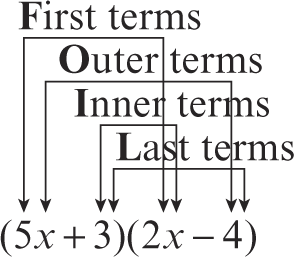
- First terms in each expression: 5x 2x = +10x2
- Outer terms in each expression: 5x 4 = 20x
- Inner terms in each expression: +3 2x = +6x
- Last terms in each expression: +3 4 = 12
If one or both of the polynomials has more than two terms, then the FOIL method does not apply. Instead, get all the combinations by multiplying the first term in the polynomial on the left by all the terms in the polynomial on the right. Then multiply the second term in the polynomial on the left by all the terms in the polynomial on the right. Continue until the last term in the polynomial on the left has been multiplied by all the terms in the polynomial on the right.

